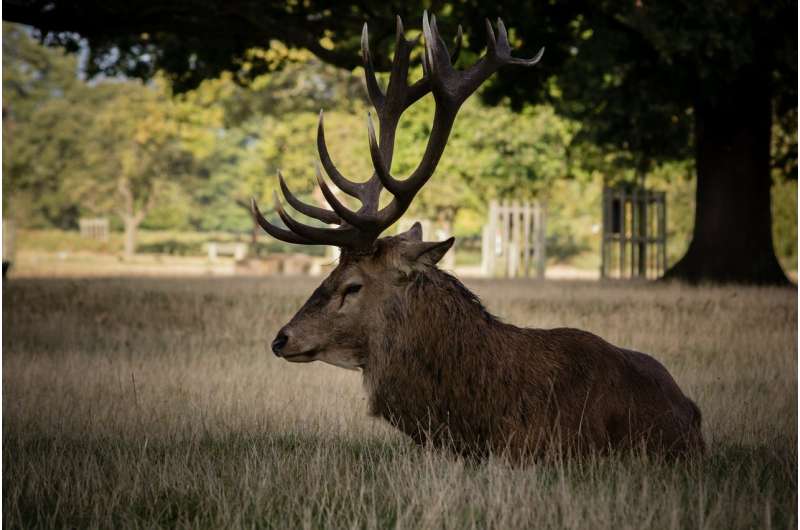Credit: CC0 Public Domain
The loss of animals, often due to unregulated or illegal hunting, has consequences for the carbon storage capacity of forests, yet this link is rarely mentioned in high-level climate policy discussions, according to a new study from Lund University in Sweden and the University of Copenhagen in Denmark.
Many wildlife species play a key role in dispersing the seeds of tropical trees, particularly large-seeded tree species, that on average have a slightly higher wood density than small-seeded trees. The loss of wildlife therefore affects the survival of these tree species—in turn potentially affecting the carbon storage capacity of tropical forests.
Forest fauna are also involved in many other ecological processes, including pollination, germination, plant regeneration and growth, and biogeochemical cycles. Empirical studies across the tropics have shown that defaunation (i.e., the human-induced extinction of wildlife) can have cascading effects on forest structure and dynamics.
The sustainability of hunting is questionable in many locations, and particularly larger species are rapidly depleted when hunting supplies urban markets with meat from wild animals.
The study assessed to which extent the link between defaunation and carbon storage capacity was addressed in contemporary forest governance, focusing on a particular mechanism referred to as Reducing Emissions from Deforestation and forest Degradation (REDD+).
The results show that although higher-level policy documents acknowledge the importance of biodiversity, and sub-national project plans mention fauna and hunting more explicitely, hunting as a driver of forest degradation is only rarely acknowledged. Moreover, the link between fauna and forest ecosystem function were not mentioned in international or national level documents.
Rather than an oversight, this may represent a deliberate political choice to avoid adding further complexity to REDD+ negotiations and implementation. This may be attributed to a desire to avoid the transaction costs of taking on these additional "add-ons" in a negotiation process that has already been complex and lengthy.
"Although biodiversity has moved from a side issue to an inherent feature over the last decade, we show that the ecological functions of biodiversity are still only mentioned superficially," says Torsten Krause, Associate Senior Lecturer at the Lund University Centre for Sustainability Studies in Sweden.
"At the sub-national level, fauna and hunting were much more likely to be mentioned in project documents, but we still found no explicit mentioning of a link between defaunation and carbon storage capacity", he adds.
The study demonstrates that defaunation is virtually overlooked in international climate negotiations and forest governance.
"The assumption that forest cover and habitat protection equal effective biodiversity conservation is misleading, and must be challenged," says Martin Reinhardt Nielsen Associate Professor at the Department of Food and Resource Economics under the University of Copenhagen, Denmark.
"The fact that defaunation and particularly the loss of large seed dispersers through unsustainable hunting have lasting repercussions throughout the forest ecosystem, must be acknowledged and considered in forest governance broadly, or we risk losing the forest for the trees", he concludes.
More information: Torsten Krause et al, Not Seeing the Forest for the Trees: The Oversight of Defaunation in REDD+ and Global Forest Governance, Forests (2019). DOI: 10.3390/f10040344
Provided by Lund University
























